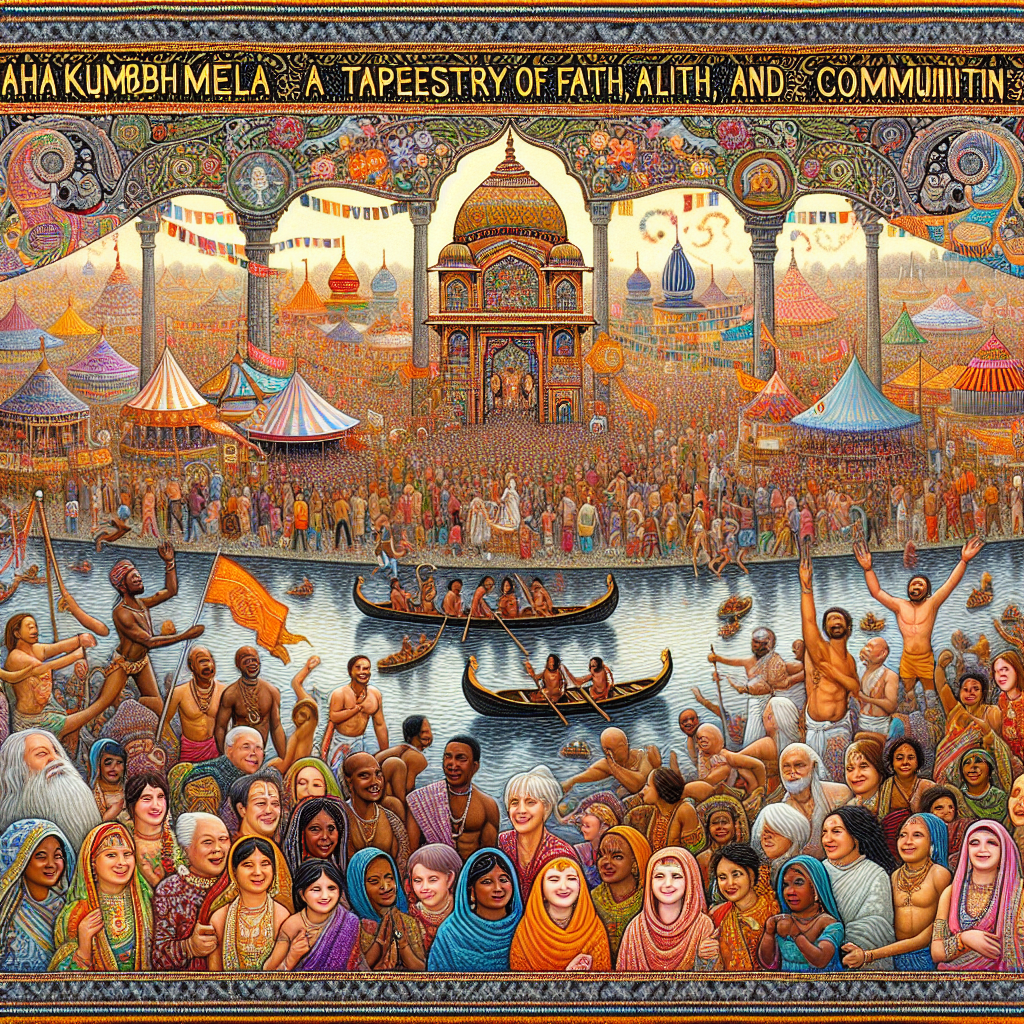[ad_1]
Maha Kumbh Mela: A Tapestry of Faith, Culture, and Community
The Maha Kumbh Mela, often referred to simply as the Kumbh Mela, is perhaps one of the largest religious gatherings in the world, attracting millions of pilgrims, ascetics, and tourists from across the globe. This grand festival, imbued with spiritual significance, takes place every twelve years at four sacred riverbanks in India: Haridwar, Allahabad (Prayagraj), Nashik, and Ujjain. Each site is chosen based on the astrological positions of celestial bodies, marking the festival not only as a spiritual retreat but also as a celestial celebration.
Historical Background
The roots of Kumbh Mela can be traced back to ancient Hindu texts, where it is said to have originated from the churning of the ocean (Samudra Manthan) by gods and demons to obtain the elixir of immortality (amrit). As the story goes, during this divine event, four drops of nectar fell at the respective Kumbh Mela sites. The Kumbh Mela thus symbolizes the quest for spiritual and material abundance as well as collective atonement.
A Festival of Spiritual Renewal
The essence of the Maha Kumbh Mela is deeply intertwined with the idea of purification. Pilgrims from diverse walks of life converge at the rivers, seeking spiritual renewal and enlightenment. The act of bathing in the sacred waters is believed to wash away sins and promote spiritual wellbeing. The festival sees an array of rituals, including the ceremonial dip, meditative practices, and ritualistic offerings, all aimed at fostering a sense of spiritual awakening.
The Vibrant Cultural Mosaic
Beyond its spiritual significance, the Maha Kumbh Mela is a vibrant display of India’s rich cultural tapestry. It showcases a dazzling array of art forms, music, and dance, as well as traditional crafts and cuisine. The sheer diversity of languages, customs, and rituals observed at the Mela reflects the pluralistic ethos of Indian society.
Street vendors line the pathways, selling everything from traditional sweets to handmade trinkets, each stall adding to the colorful ambience. As night falls, cultural programs unfold, featuring devotional music, dance performances, and discourses by revered spiritual leaders. The Kumbh Mela is not merely a pilgrimage; it is a celebration of life, hope, and togetherness.
The Role of Community
At its core, Maha Kumbh Mela is a testament to the strength of community. It fosters a sense of belonging among pilgrims from various backgrounds, fostering an atmosphere of unity and shared purpose. The event builds bridges between different communities, allowing participants to forge connections that transcend regional, cultural, and social barriers.
The Mela also serves as a platform for social outreach and discourse. Non-governmental organizations, spiritual groups, and local authorities often set up stalls and camps focused on health, education, and ecological sustainability, further uniting the Mela with contemporary societal issues.
An Experience Beyond Boundaries
In recent years, the Maha Kumbh Mela has evolved to become a symbol of global spiritual tourism. Tourists and spirituality seekers from around the world flock to witness this unique confluence of faith, culture, and community. The festival presents an unparalleled opportunity for cultural exchange and understanding, beckoning individuals to experience the essence of India.
The government and various organizations have invested in infrastructure and services to accommodate the large influx of visitors, ensuring safety and comfort without diluting the festival’s spiritual ethos. From sanitation facilities to healthcare services, every detail is meticulously designed to enhance the experience.
Challenges and Resilience
While the Maha Kumbh Mela thrives on its rich heritage and community, it is not without challenges. The logistics of managing the flow of millions of attendees can be daunting, requiring coordination between myriad stakeholders. Issues such as environmental sustainability, health safety, and managing resources are critical aspects that organizers continually address.
Despite these challenges, the Mela has demonstrated remarkable resilience, adapting to changing times while retaining its essence. The commitment to preserving traditions while welcoming new influences remains a cornerstone of the event.
Conclusion
The Maha Kumbh Mela is a remarkable tapestry woven from threads of faith, culture, and community. It stands as a celebration of unity and diversity, inviting pilgrims and seekers from around the world to experience its profound spiritual vibrancy. As millions gather to participate in this ancient festival, it continues to inspire transformation and renewal, echoing the timeless message of hope and togetherness. In an ever-evolving world, the Kumbh Mela remains a steadfast reminder of the enduring power of faith and community.
[ad_2]

